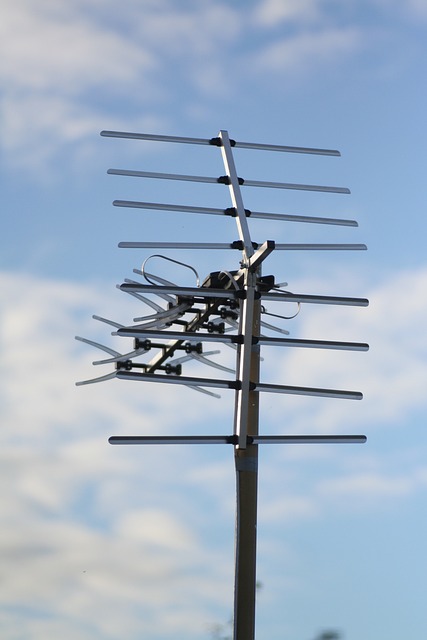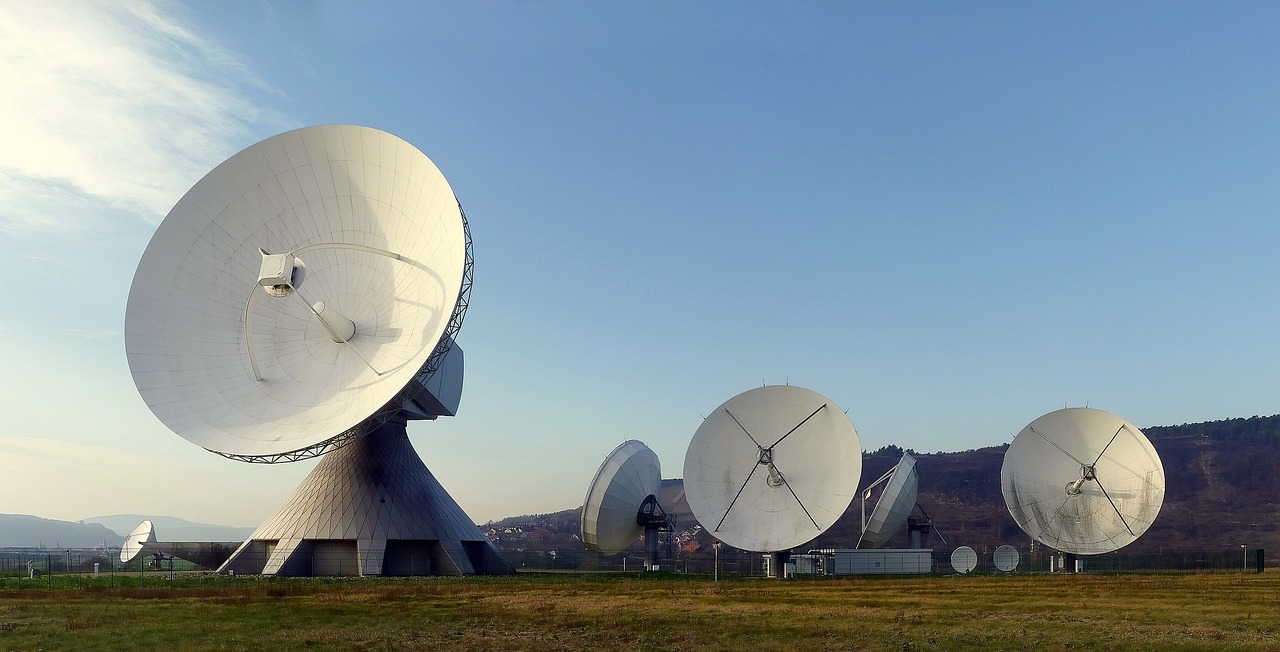Are you tired of dealing with poor satellite and TV antenna reception while on the road in your RV? Do you want to learn how to troubleshoot and fix common issues on your own? Look no further than this comprehensive guide to the art of troubleshooting RV satellite and TV antenna problems.
First, you’ll need to understand the components of your RV’s satellite and antenna systems. From the satellite dish and receiver to the cabling and wiring, each piece plays a crucial role in delivering a clear signal to your TV.
With this knowledge, you’ll be able to identify common problems such as poor signal reception, hardware malfunctions, and weather-related interference. Through a series of troubleshooting steps and solutions, you’ll be able to optimize your setup and enjoy crystal-clear TV and satellite reception on your next RV adventure.
Understanding the Components of Satellite and TV Antenna Systems
Let’s take a closer look at the different parts that make up your satellite and television setups. Understanding the components of your RV satellite and TV antenna system is essential in troubleshooting any signal loss or alignment issues you may encounter.
First, let’s talk about the satellite system. The dish is the most significant part of the setup and is responsible for capturing the satellite signal. The LNB (Low-Noise Block Downconverter) is located at the end of the dish’s arm and amplifies the signal before sending it down the coaxial cable to your receiver. The receiver is what decrypts the signal and sends it to your TV.
In contrast, the TV antenna system consists of an antenna, amplifier, and a coaxial cable that connects to your TV. It’s essential to understand each component to determine where signal loss or alignment problems may be occurring and to apply the appropriate alignment techniques to fix them.
Identifying Common RV Satellite and TV Antenna Problems
Ah, the joys of deciphering the enigmatic signals of your home away from home’s entertainment system – nothing quite like it. But don’t worry, identifying common RV satellite and TV antenna problems isn’t rocket science.
The most common problem with satellite and TV antenna systems is poor signal reception. This can be caused by a number of issues, such as a misaligned dish or antenna, a damaged cable, or interference from trees or other obstacles.
To identify the root cause, start with a visual inspection of all the components and connections. If everything seems fine, use a signal meter to test the signal strength and quality at different points in the system. This will help you pinpoint where the issue is and make any necessary DIY repairs.
Troubleshooting Poor Signal Reception
If you’re experiencing fuzzy or pixelated TV channels during your camping trip, you may need to take a closer look at your signal reception and figure out where the issue lies.
One common cause of poor signal reception is that your RV or antenna is not properly placed. Try adjusting the placement of your RV or antenna to get a better signal. This can be done by moving your RV to a higher location or by pointing your antenna in a different direction.
If adjusting the placement of your RV or antenna does not solve the issue, you may need to consider upgrading your equipment. An amplified antenna or signal booster can help improve your signal strength and reduce interference. Additionally, you may want to invest in a satellite dish or a high-performance antenna for better signal reception.
Remember, troubleshooting poor signal reception requires patience and persistence, but with a little effort, you can enjoy clear and uninterrupted TV channels during your camping trip.
Fixing Issues with Satellite and Antenna Hardware
In the section on fixing hardware issues, you’ll find helpful tips to improve your signal reception. One of the most important things you can do is to perform proper maintenance on your satellite and antenna hardware. This includes checking for any loose connections or damaged components, as well as cleaning the dish or antenna to ensure optimal signal reception.
By taking the time to perform routine maintenance, you can avoid many of the common problems that RVers experience with their satellite and antenna systems. If you’re still experiencing issues despite proper maintenance, it may be time to seek out technical support. Many RVers find that working with a knowledgeable technician can help them identify and resolve complex hardware issues, such as damaged cables or faulty receivers.
Additionally, technical support can provide valuable advice on upgrading your equipment to improve signal strength and reception. By taking advantage of these resources, you can ensure that you’re getting the most out of your RV satellite and antenna system.
Dealing with Weather-Related Interference
When the skies darken and the winds start to howl, your ability to binge-watch your favorite shows may be hampered by the forces of nature. Satellite and TV antenna hardware can be especially vulnerable to weather-related interference, causing signal loss, pixelation, or complete blackout.
One of the most common weather-related issues is ‘rain fade,’ which occurs when heavy raindrops absorb the satellite signals and weaken their strength. To prevent rain fade, you can take several steps, such as using a larger dish and a higher-powered LNB (low noise block) that can capture stronger signals, or installing a rain cover on the dish to deflect the raindrops. However, the most effective way to avoid rain fade is to adjust the antenna elevation to a higher angle, which can reduce the impact of the raindrops and maintain a stable signal.

Another weather-related interference that can affect your satellite or TV antenna is strong wind or storm. These can cause the dish or antenna to shift or misalign, leading to signal loss or distortion. To prevent this, you should make sure that your dish or antenna is securely mounted and tightened, and check for any loose or damaged parts.
You can also use a sturdy mast or pole that can withstand strong winds, and add guy wires or braces for extra support. Additionally, you should avoid aiming your dish or antenna towards tall trees or buildings that may sway or obstruct the signal during a storm.
By taking these precautions and being prepared for weather-related interference, you can enjoy uninterrupted TV and satellite reception even in the harshest conditions.
Optimizing Your RV’s Satellite and Antenna Setup
Get ready to experience the ultimate outdoor entertainment by fine-tuning your setup and enjoying crystal-clear reception of your favorite shows while lounging under the starry sky. Maximizing signal strength is key to achieving optimal reception, and one way to do this is by making sure your RV’s satellite or TV antenna is properly positioned.
This means adjusting the antenna to face the right direction, which can be determined by using a compass or consulting a satellite map. Another important factor in optimizing your RV’s satellite and antenna setup is ensuring that there are no obstructions blocking the signal.
This can include trees, buildings, or even other RVs. If there are obstructions, try moving your RV to a different location or adjusting the antenna positioning to find a clear line of sight. By taking the time to fine-tune your setup and maximize signal strength, you’ll be able to enjoy uninterrupted entertainment during your outdoor adventures.
Seeking Professional Help When Necessary
Sometimes it’s best to seek professional assistance if you want to ensure your outdoor entertainment is top-notch. While DIY troubleshooting can be tempting, there are certain situations where it’s better to call in the experts.
For example, if you’re dealing with a complex issue that you don’t have the knowledge or tools to fix, it’s best to leave it to the professionals. Additionally, if you’ve already tried multiple troubleshooting techniques and nothing seems to be working, it’s time to consult with a professional.
Another reason to seek professional help is if you’re dealing with a warranty issue. Many satellite and TV antenna manufacturers require that repairs be made by authorized technicians in order to maintain the warranty. If you attempt to fix the problem yourself and cause further damage, you may end up voiding the warranty altogether.
In these cases, it’s always best to play it safe and call in a professional to avoid any potential problems down the line.
Frequently Asked Questions
How do I know if my RV satellite or TV antenna system is compatible with my RV model?
When it comes to setting up your RV with a satellite or TV antenna system, compatibility factors are crucial. You don’t want to end up with a system that doesn’t work with your RV model requirements.
That’s why it’s important to research and understand the specific compatibility needs of your RV. Satellite and antenna system integration is a complex process that involves many technical details. You need to make sure that the equipment you choose is compatible with your RV and is capable of delivering the quality of signal you need for a great viewing experience.
So, take the time to do your research and make sure that your RV and satellite or TV antenna system are a perfect match.
Can I use a satellite dish and a TV antenna simultaneously on my RV?
Yes, you can use a satellite dish and a TV antenna simultaneously on your RV by using amplifiers, switching, or combiners. However, using a splitter for RV satellite and TV antenna systems has both advantages and disadvantages.
On one hand, it allows you to connect multiple TVs to a single antenna or satellite dish, which can be convenient for larger groups or families. On the other hand, using a splitter can cause signal loss and weaken the overall performance of both the antenna and satellite dish.
It’s important to consider the specific needs of your RV setup and weigh the pros and cons before deciding whether to use a splitter or other methods for combining your RV satellite and TV antenna systems.
What should I do if my satellite or TV antenna system is not covered by a warranty anymore?
Imagine you’re driving through a scenic mountain road, enjoying the breathtaking views when suddenly, your RV’s satellite or TV antenna system breaks down. You’re left with no entertainment and no means of communication. It’s a frustrating situation, but it’s not the end of the road.
If your system is out of warranty, you have two options: repair or replace. Before deciding, consider the cost of repair, the age of your system, and the extent of damage. If the cost of repair exceeds the value of the system, it’s best to replace it. However, if the damage is minor and repair costs are reasonable, fixing the system could be the best option.
Ultimately, it’s up to you to decide, but with careful consideration, you can find a solution that fits your needs and budget.
How do I properly maintain my RV satellite or TV antenna system to prevent future issues?
Proper maintenance of your RV antenna system is crucial to prevent any future issues.
Regularly check your antenna for any signs of wear and tear, including loose connections, damaged cables, and corrosion.
Keep the area around your antenna clean and free of debris.
If you notice any problems, such as poor signal reception or no signal at all, there are several troubleshooting techniques you can try before calling for professional help.
These include resetting your receiver, checking the coaxial cable connections, and adjusting the antenna’s position.
By taking these steps, you can ensure that your RV antenna system works efficiently and reliably, making your travels more enjoyable.
Can I install a satellite or TV antenna system on my RV myself, or should I hire a professional?
Have you been thinking about installing a satellite or TV antenna system on your RV? Before you start, you should consider the pros and cons of DIY vs. professional installation.
While a DIY installation may seem like the cheaper option, it also comes with potential risks and challenges. Without the proper knowledge and experience, you may end up damaging your RV or the equipment.
On the other hand, hiring a professional installer can save you time and ensure that the job is done correctly. Of course, this option may come with a higher price tag.
When comparing the cost of DIY vs. professional installation, it’s important to factor in the potential costs of mistakes or damages that may occur during a DIY installation.
Ultimately, the decision between DIY vs. professional installation will depend on your personal experience, skills, and budget.
Conclusion
Congratulations, you’ve successfully troubleshooted your RV’s satellite and TV antenna problems! You’ve become a master at understanding the components of the system, identifying common issues, and fixing hardware problems.
You’ve even learned how to deal with weather-related interference and optimize your setup for the best possible signal reception. Think of your RV’s satellite and TV antenna system as a complex puzzle, with each piece needing to fit perfectly for it to work effectively.
You’ve taken the time to carefully examine each piece, ensuring that they are all working together seamlessly. You’ve fine-tuned your system to perfection, allowing you to enjoy your favorite shows and movies while on the road.
Remember, if you ever run into any problems again, don’t hesitate to seek professional help. Just like a puzzle, sometimes it takes an expert to help put all the pieces together.
But for now, sit back, relax, and enjoy the fruits of your labor as you watch your favorite shows on your perfectly functioning RV satellite and TV antenna system.




